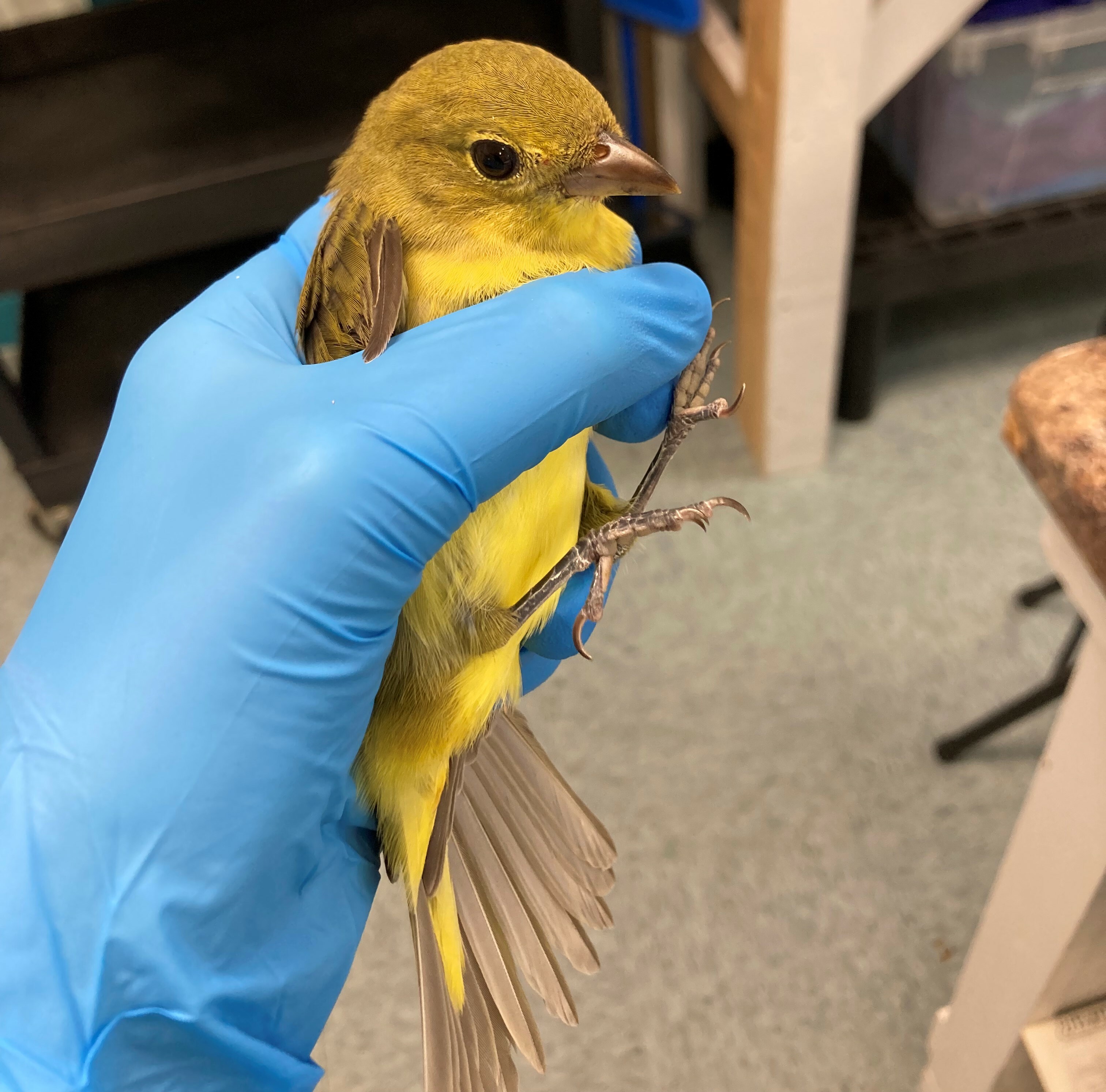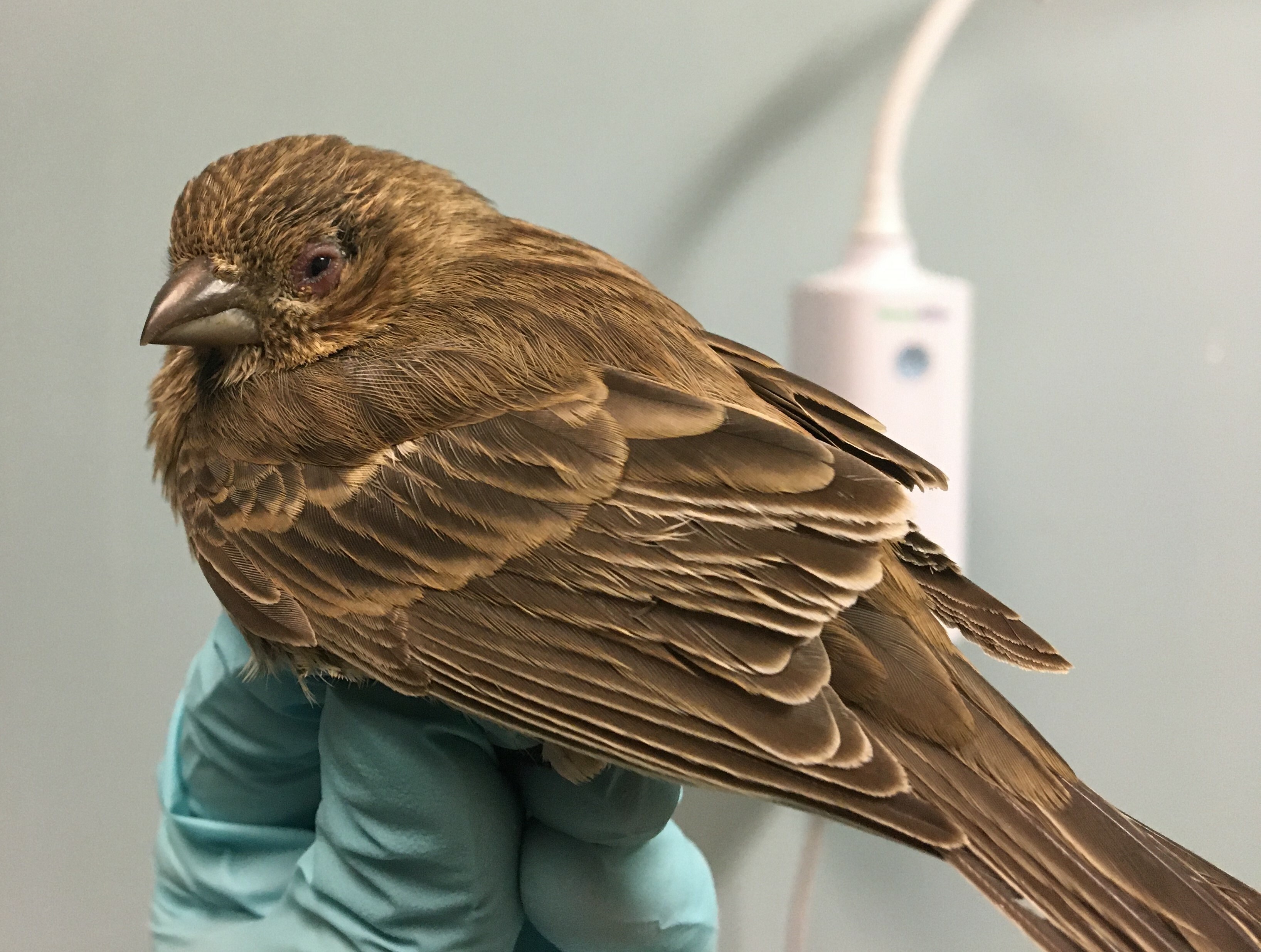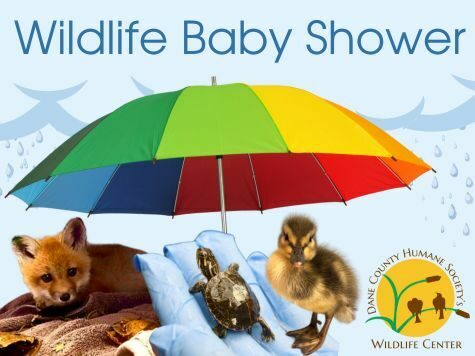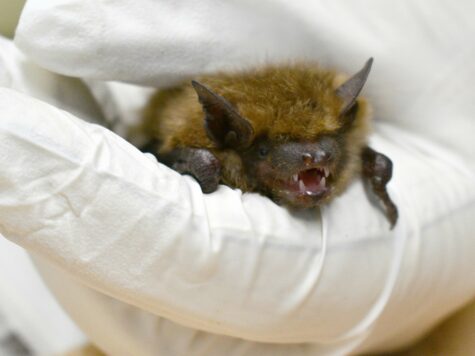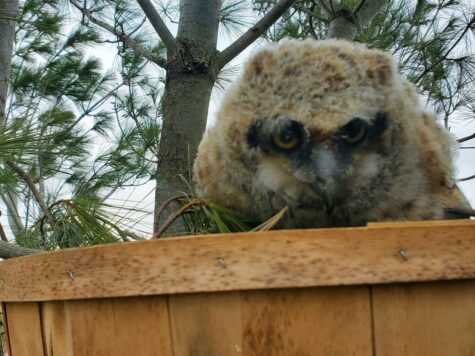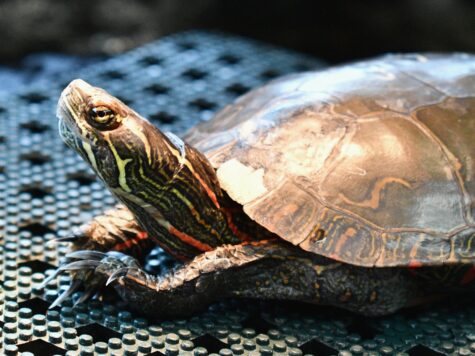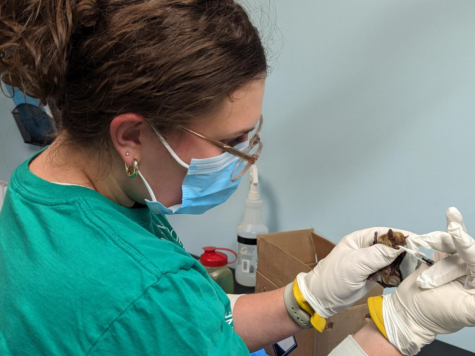About Conjunctivitis
Avian conjunctivitis is a common disease that primarily affects birds in the Fringillidae (finch) family, which, in our area, typically includes house finches, goldfinches, purple finches, and pine siskins. This disease is caused by a bacteria, Mycoplasma gallisepticum, that spreads rapidly through wildlife populations via direct contact, such as when birds congregate around water and food sources. It causes symptoms such as ocular swelling, inflammation, and discharge, and if left untreated, it has the potential to cause vision loss, emaciation, and even death. According to wildlife managers, house finches may be less resistant to disease than other species due to low genetic diversity (MiDNR 2022). DCHS’s Wildlife Center has seen this disease mostly in these species:

How can you help reduce the spread of disease? Check out our informational resources or follow these tips:
Because conjunctivitis is easily spread on surfaces, one important way to prevent transmission is by cleaning and disinfecting your bird feeders regularly. Here are some steps for disinfecting bird feeders and baths:
- Remove all dirt and other debris by washing the feeder or bath thoroughly with hot, soapy water.
- Gather either a large enough container/tub/sink to submerge your feeder, or a spray bottle.
- Create a diluted bleach solution by adding 1 part bleach to 32 parts water. This equals a ½ cup of bleach to one gallon of water, or 1 tablespoon of bleach to 16 ounces of water. NOTE: Diluted bleach is only good for 24 hours, so be sure to make a new batch each time you need to disinfect your feeders.
- Allow the feeder or bath to soak in the bleach solution for a full 10 minutes. If you are spraying down your feeder, make sure it stays wet for the entire 10-minute disinfection time.
- Once disinfected, thoroughly rinse and dry your feeder or bath before refilling with new seed or water.
- Disinfect at least once or twice per month (more often is better). If you notice any birds showing signs of infection, wash your feeder immediately.
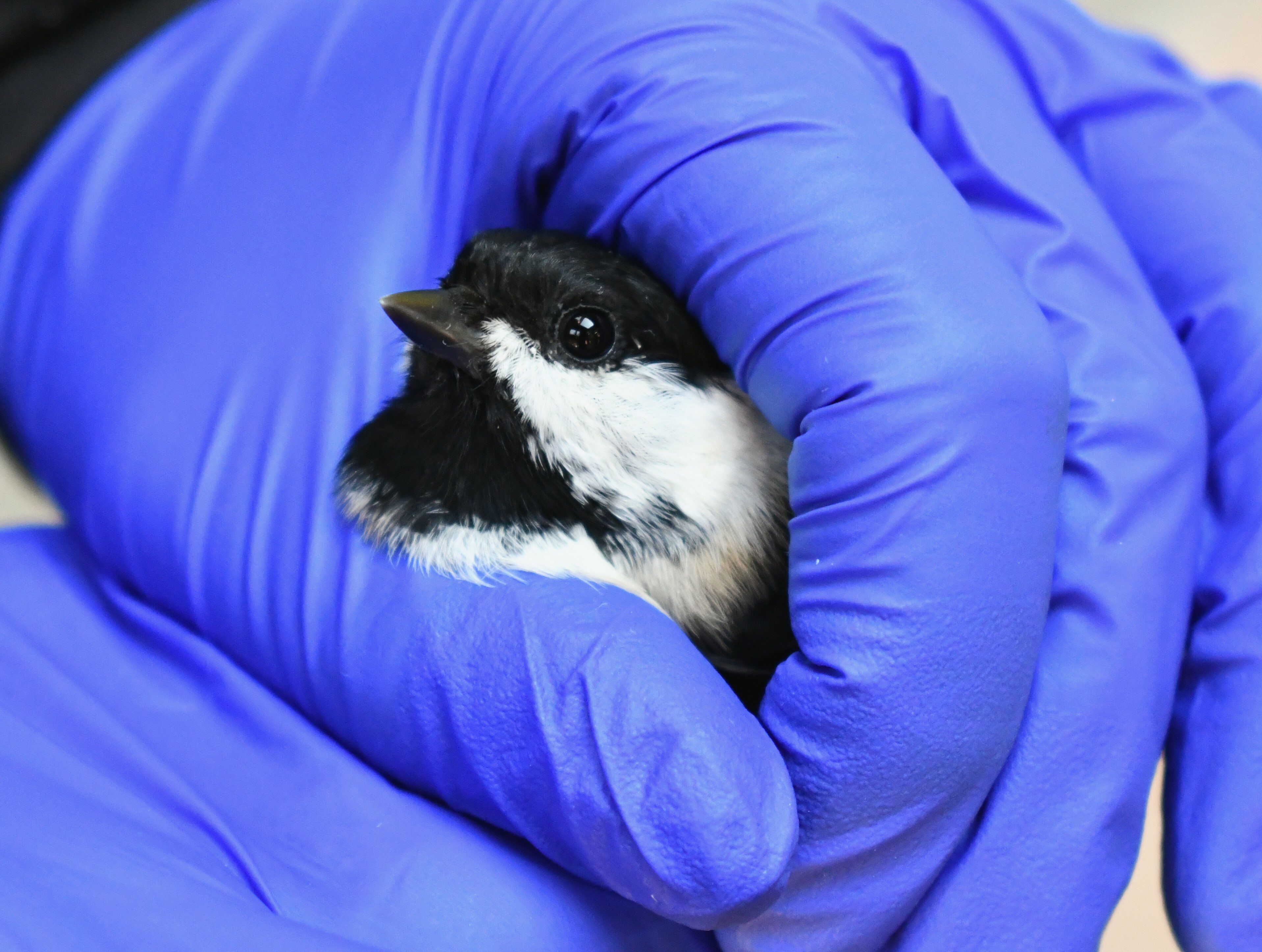
Window Strikes
How many birds have been admitted to DCHS’s Wildlife Center due to observed or suspected window strikes? Did they sustain any injuries, and what kind? What was the release rate of those birds? How many were long-distance migrants? Those are a lot of questions, but long-term data can help us answer them!
Here are the somber statistics:
- In the last decade, 1,443 birds have been admitted to DCHS’s Wildlife Center due to an observed or suspected window collision (Jan 2012 to Oct 2022).
- Of these, only 821 window strikes were truly observed. The rest were inferred based on information from the finder about where the bird was discovered or by its abnormal behavior.
- A whopping 83% of these birds were rescued in Dane County.
- The highest record of admissions by species was the mourning dove at 128 total individuals.
- 288 birds displayed evidence of head trauma, such as ataxia, and 150 birds were evaluated with evidence of spinal trauma (ex. hindlimb paralysis or paresis). That’s 30% of all those admissions.
- Mortality statistics include: 29% died soon after admission, 42% were admitted in severe condition where humane euthanasia services were deemed necessary, and 28% of birds were successfully treated and released. Only 3 birds were permanently placed in educational facilities or sanctuaries.
Click here to view a full 10-year report of which species were admitted to DCHS's Wildlife Center because of window strikes.
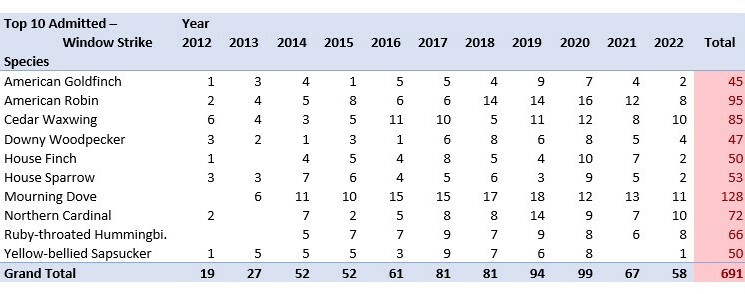
These rates, numbers, and statistics are not uncommon. Many wildlife rehabilitators manage cases just like this every day. If you make an inference by the number of licensed bird rehabilitation facilities in existence around the United States, which is over 1,400 permitted individuals (NWRA 2015), it suggests over 1 million birds admitted due to window strikes per year. Regrettably, that’s a lot of birds. We should promote as much education as we can to try to save them, as the totals truly add up.
DCHS’s Wildlife Center created resources like the handout below that are available to share with others regarding how to prevent window strikes at your home or business.
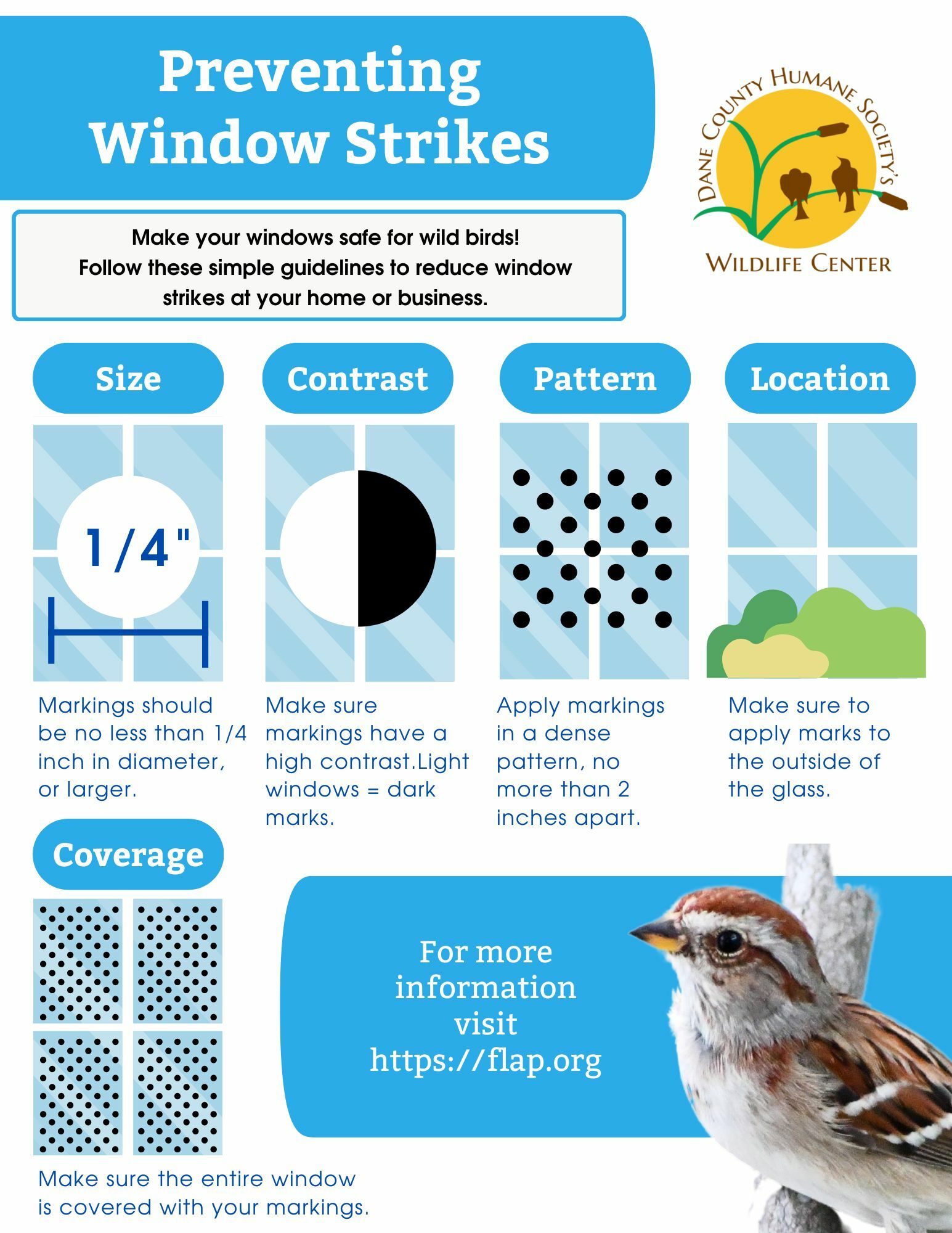
Common strategies used to prevent window strikes include:
- Install patterned glass
- Hang window decals
- Hang parachute cord
- Hang shiny or colorful ribbons
- Close the blinds or shades
- Move bird feeder or bath locations
- Allow your windows to get dirty!
- Admit injured birds to wildlife rehabilitation
In addition, partner agencies at Wisconsin Humane Society have excellent information available online here.
Jackie Sandberg is the Wildlife Program Manager at DCHS's Wildlife Center.
